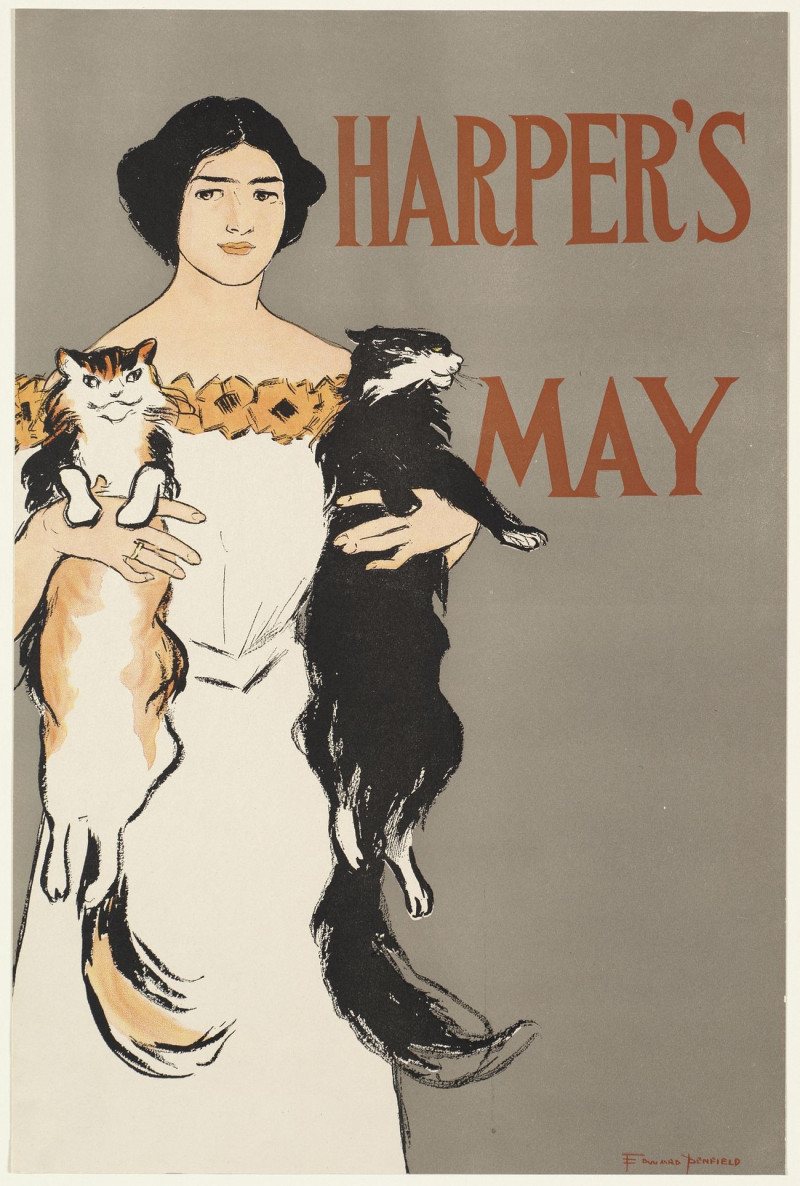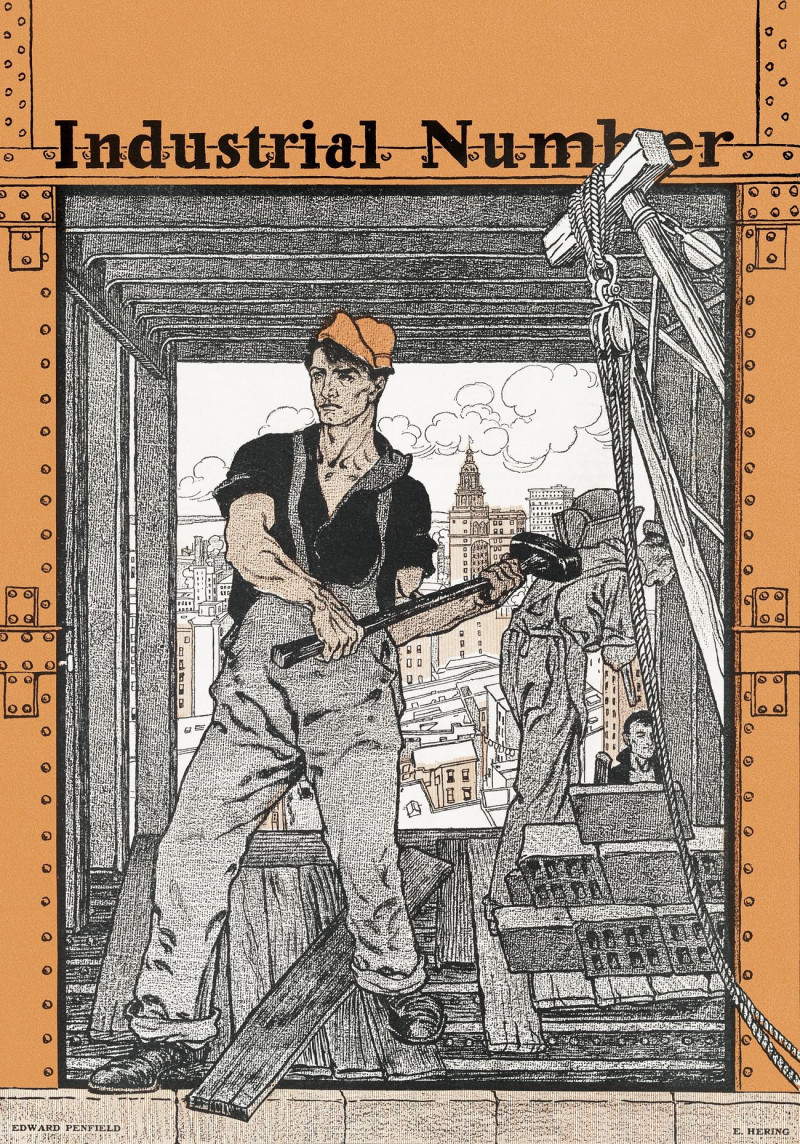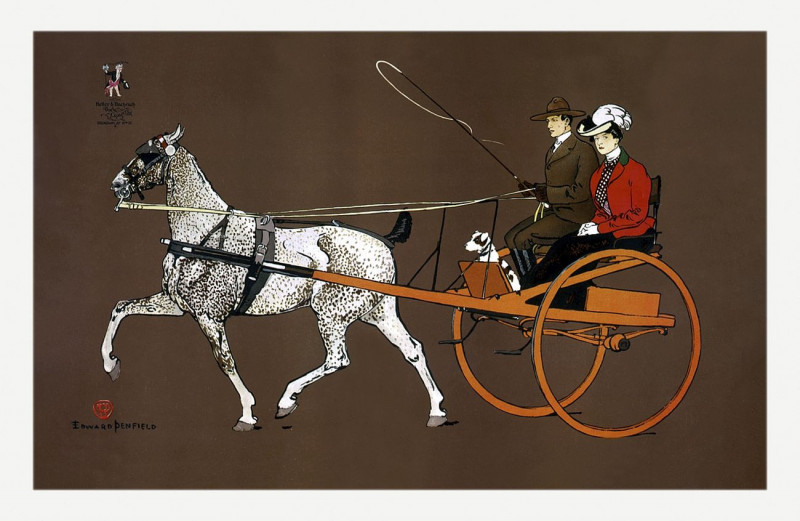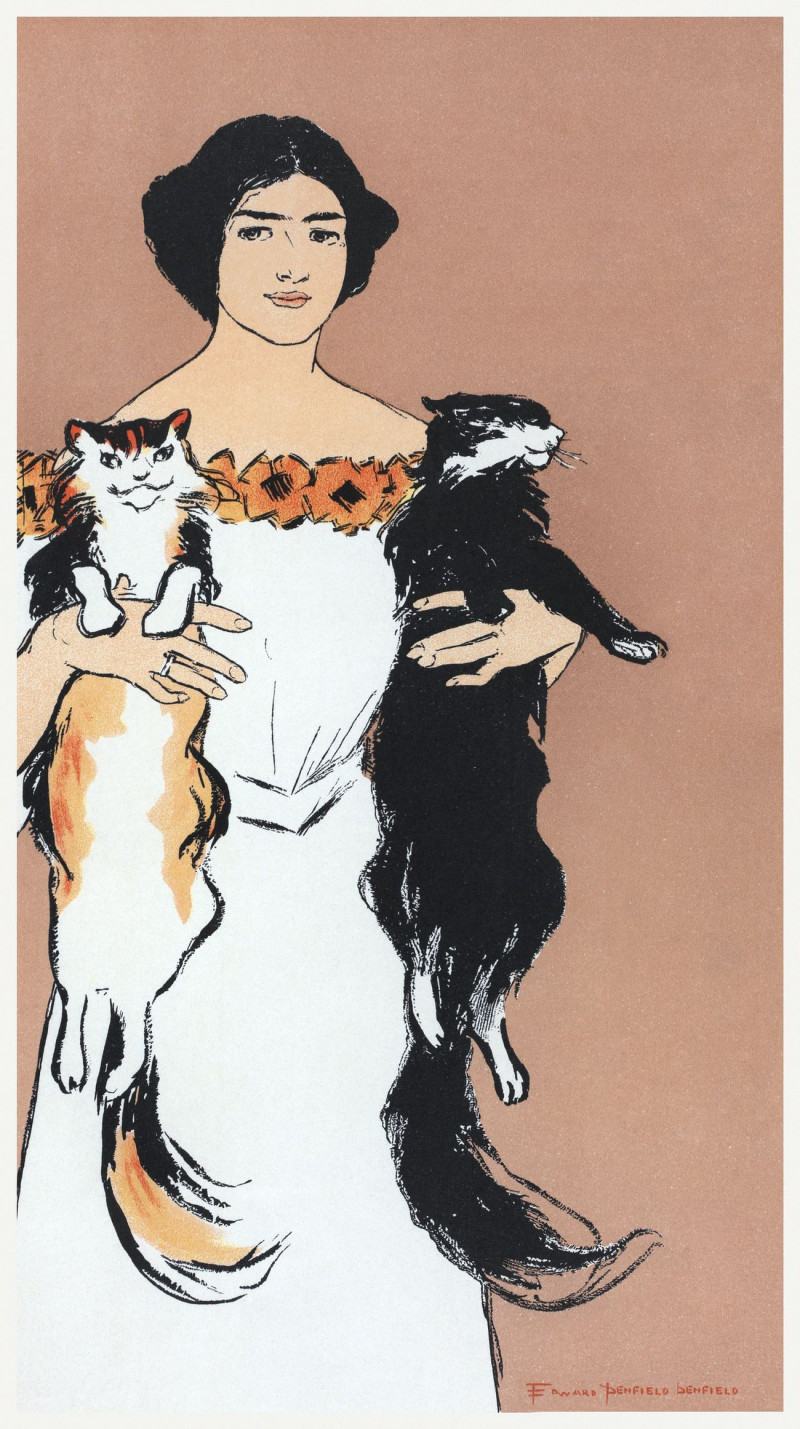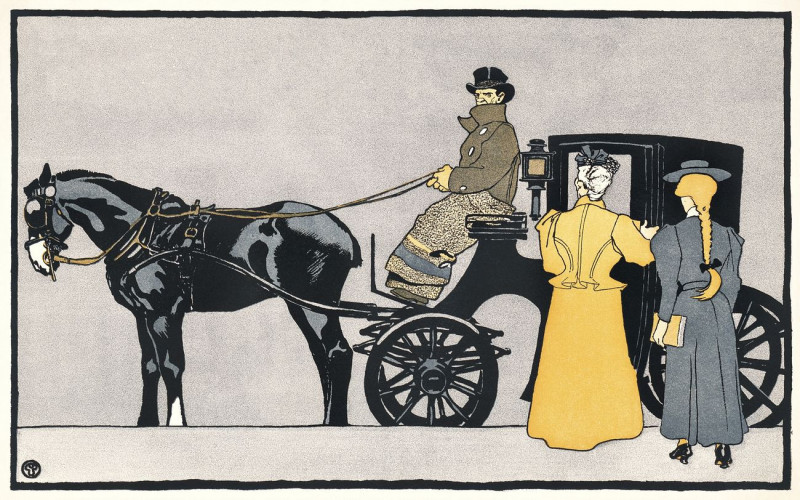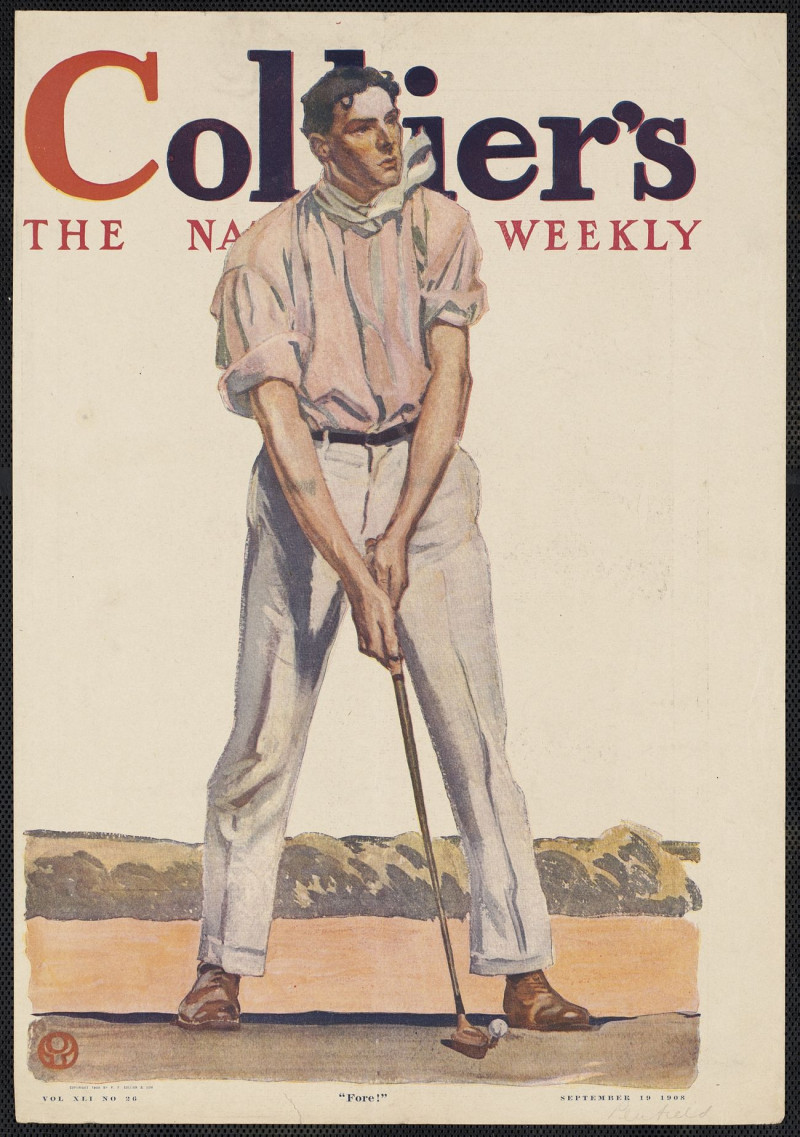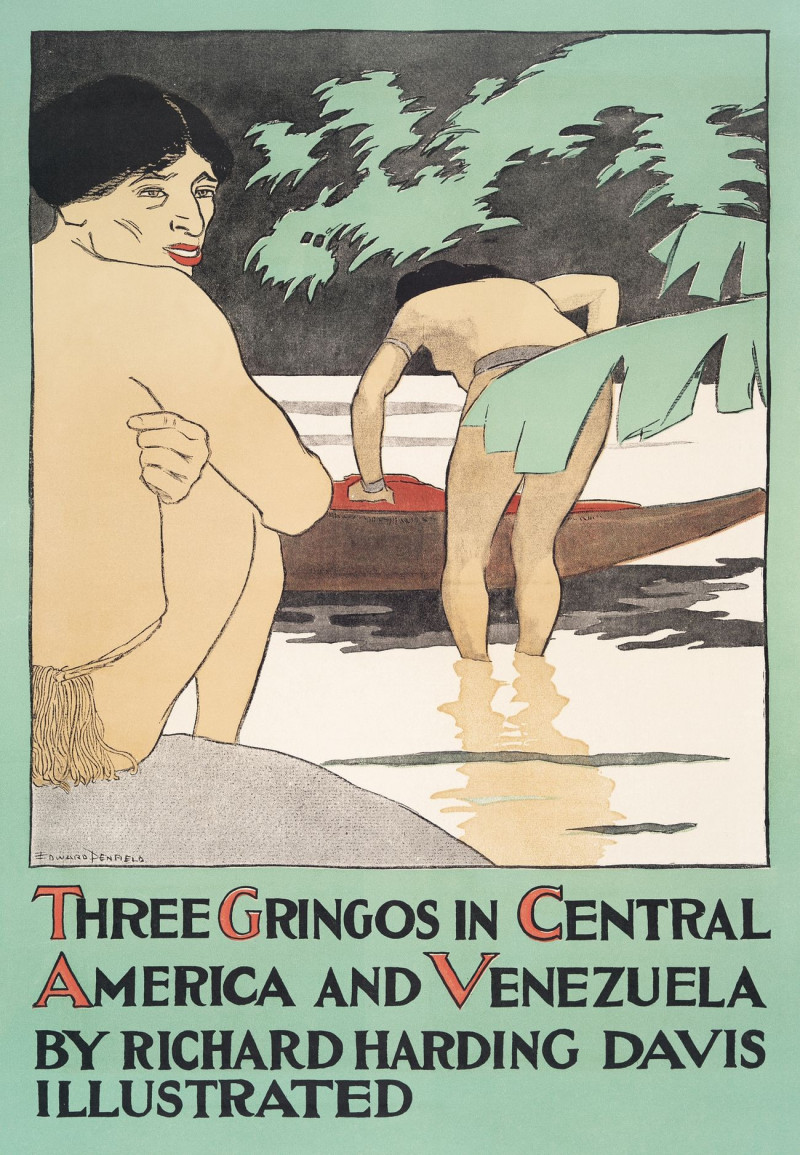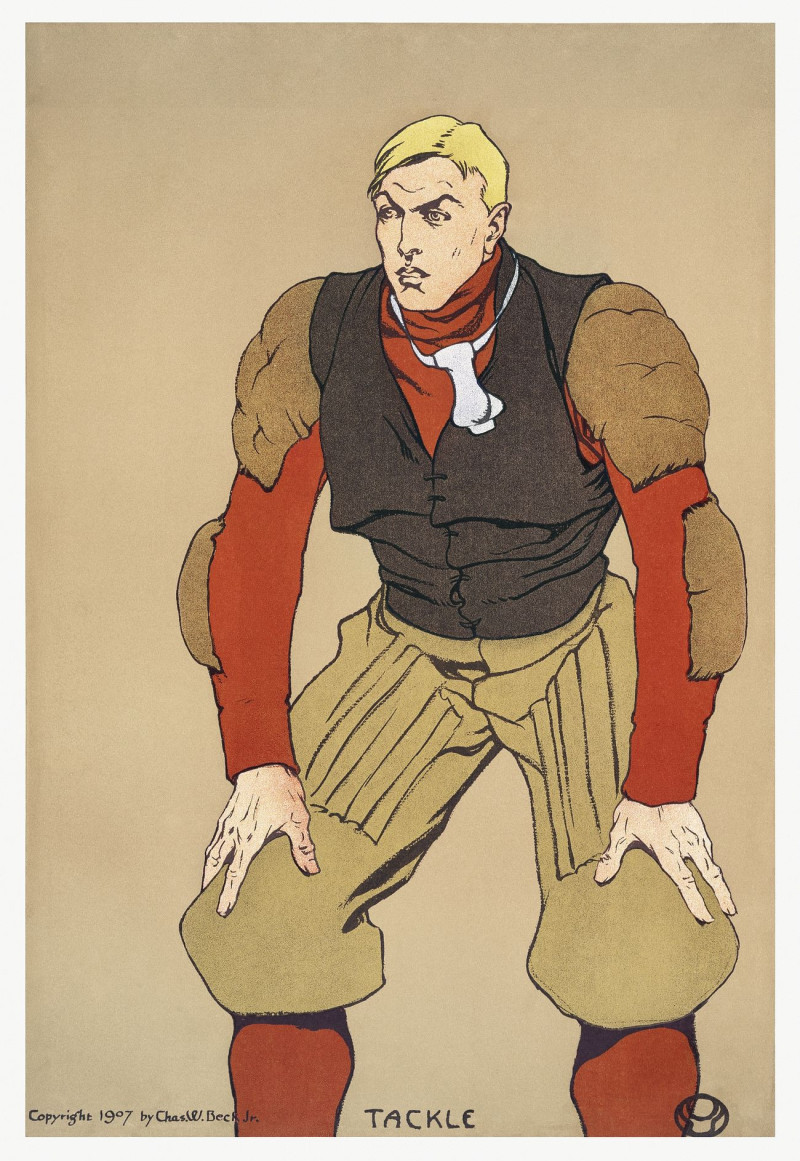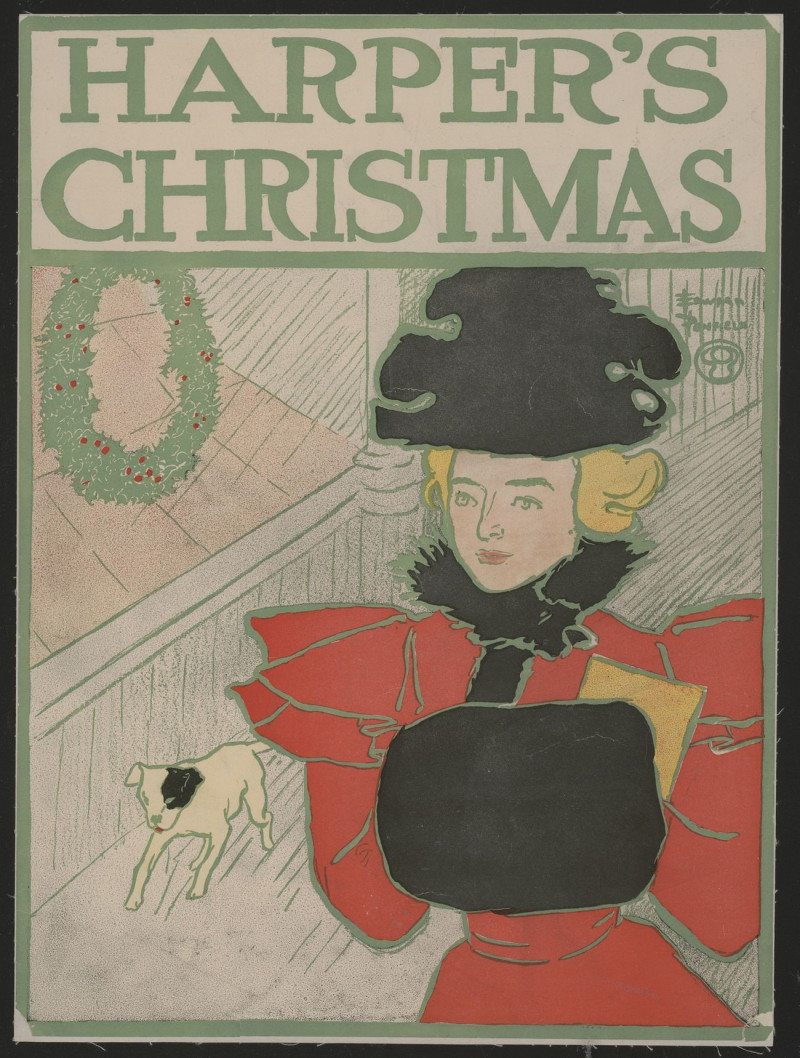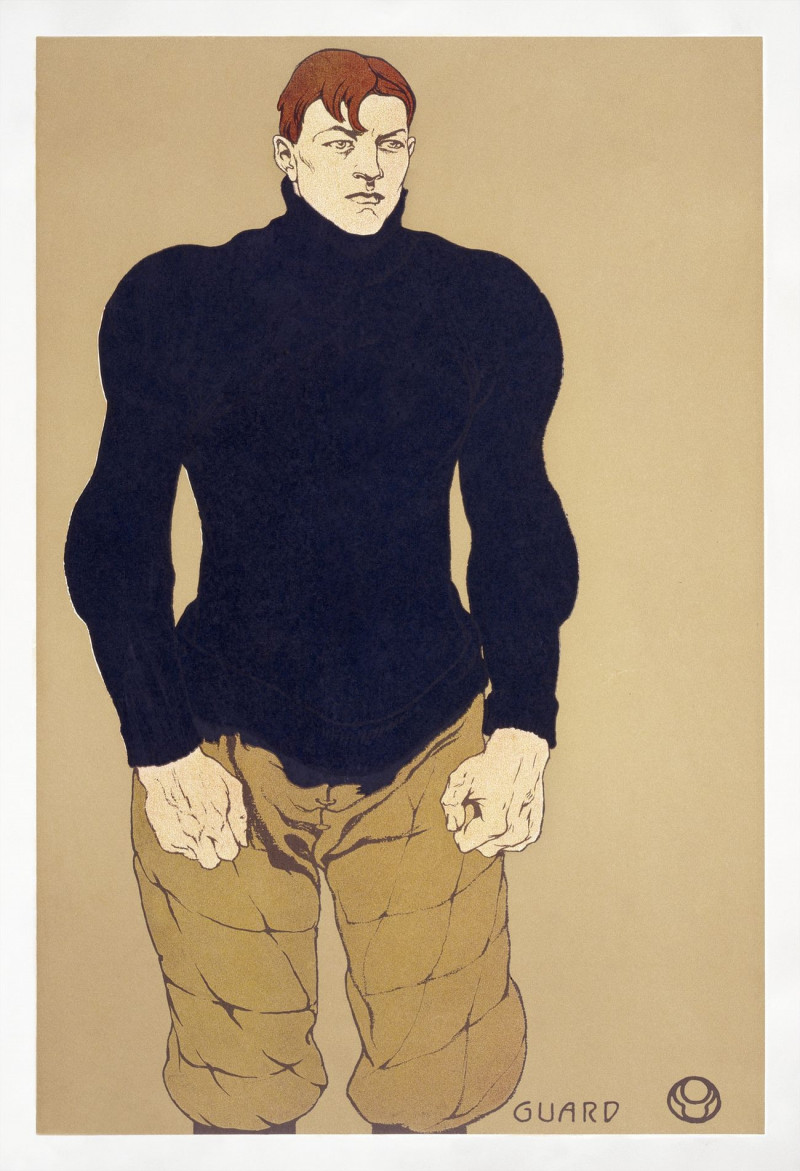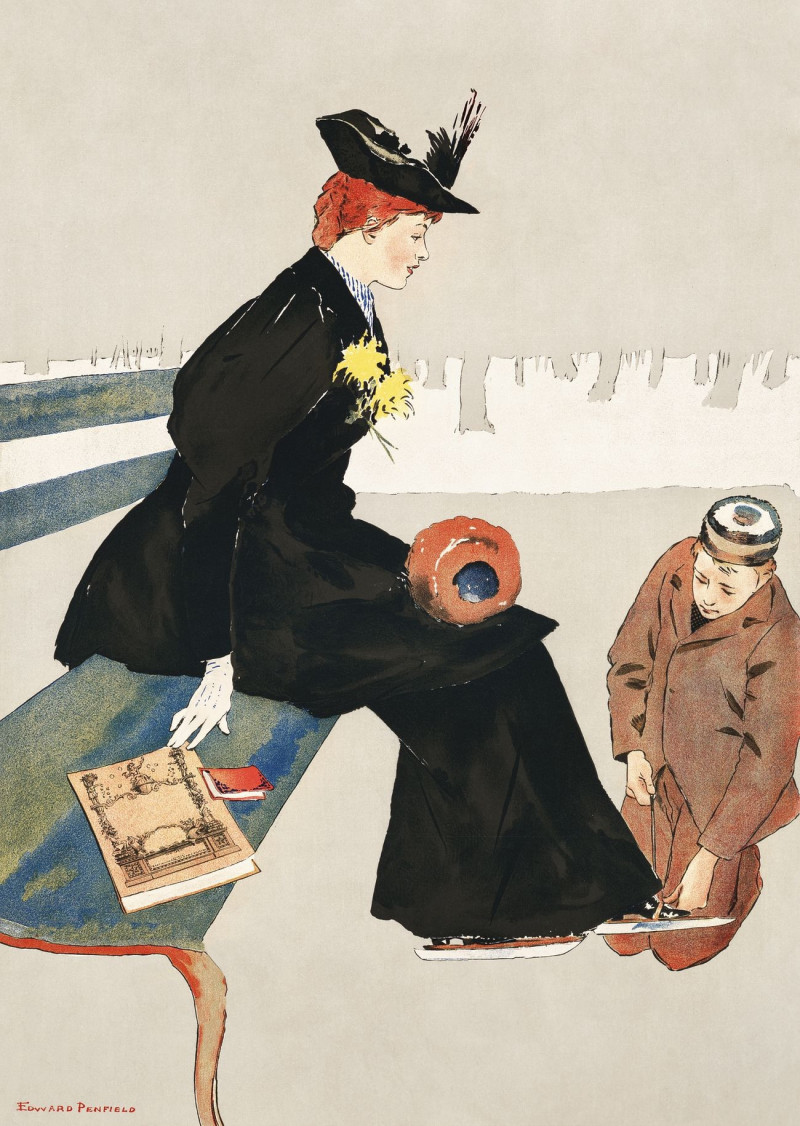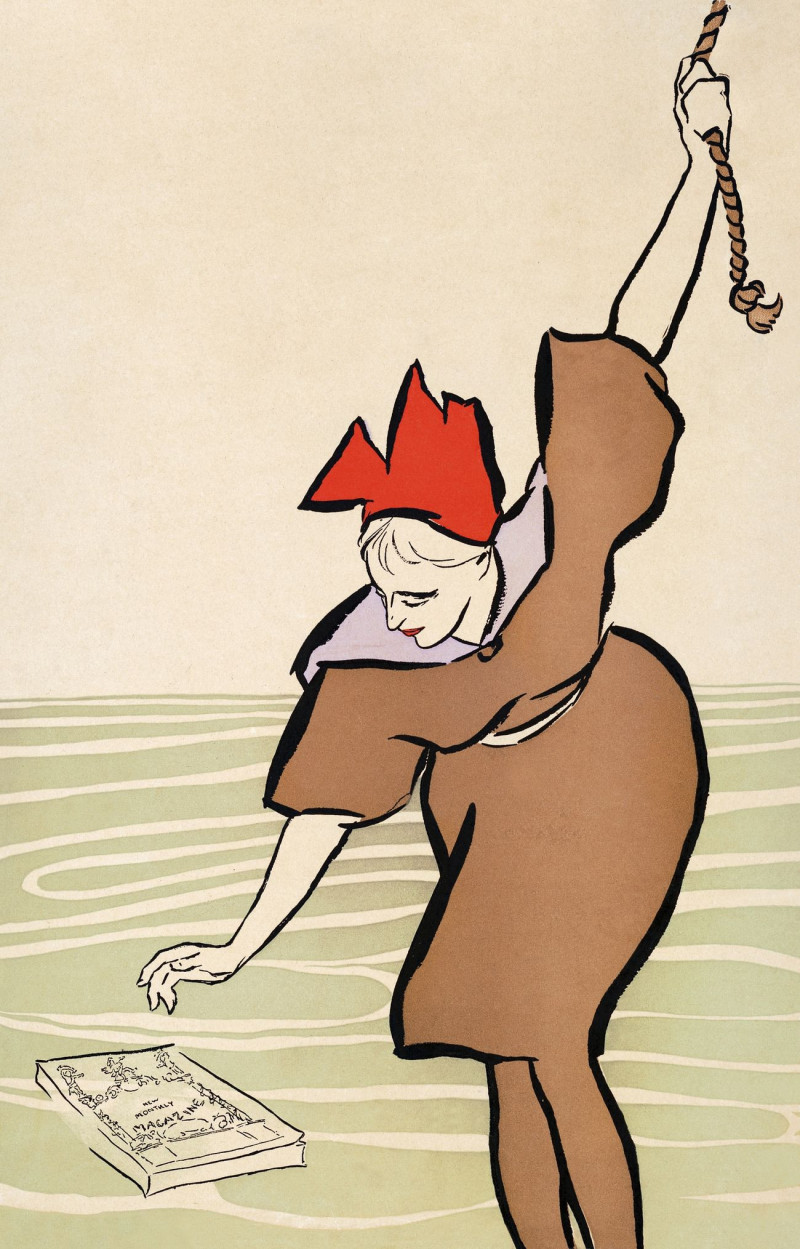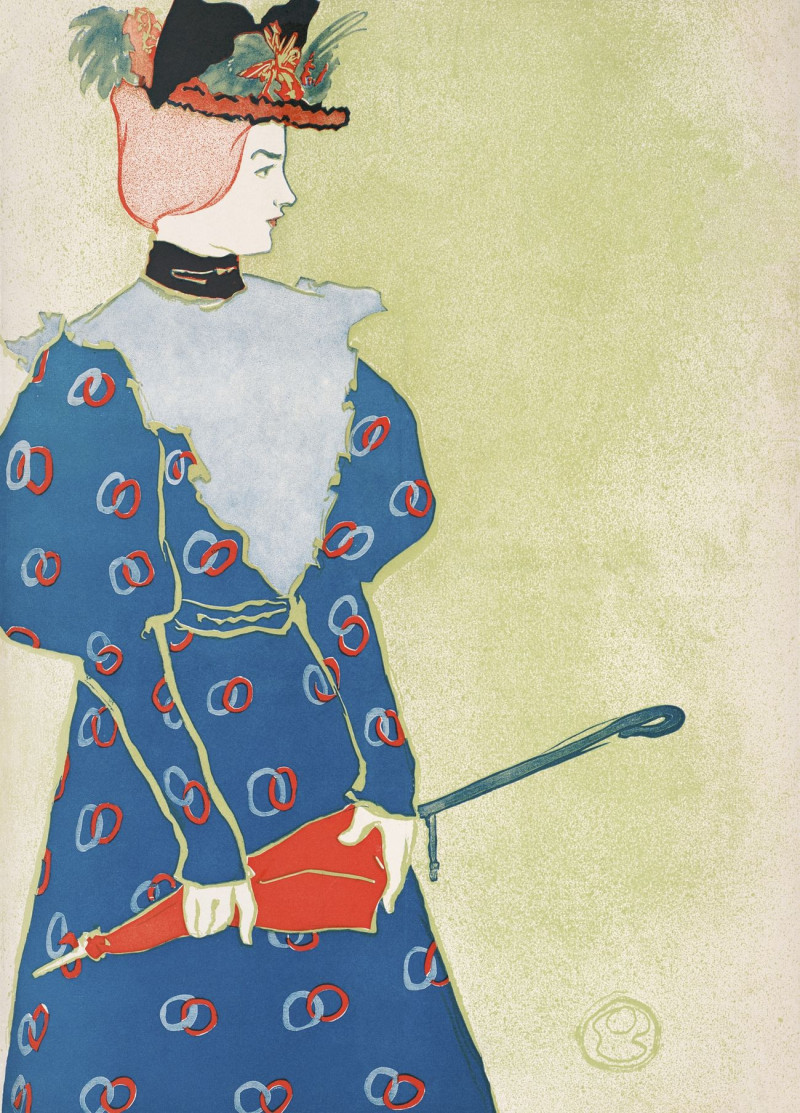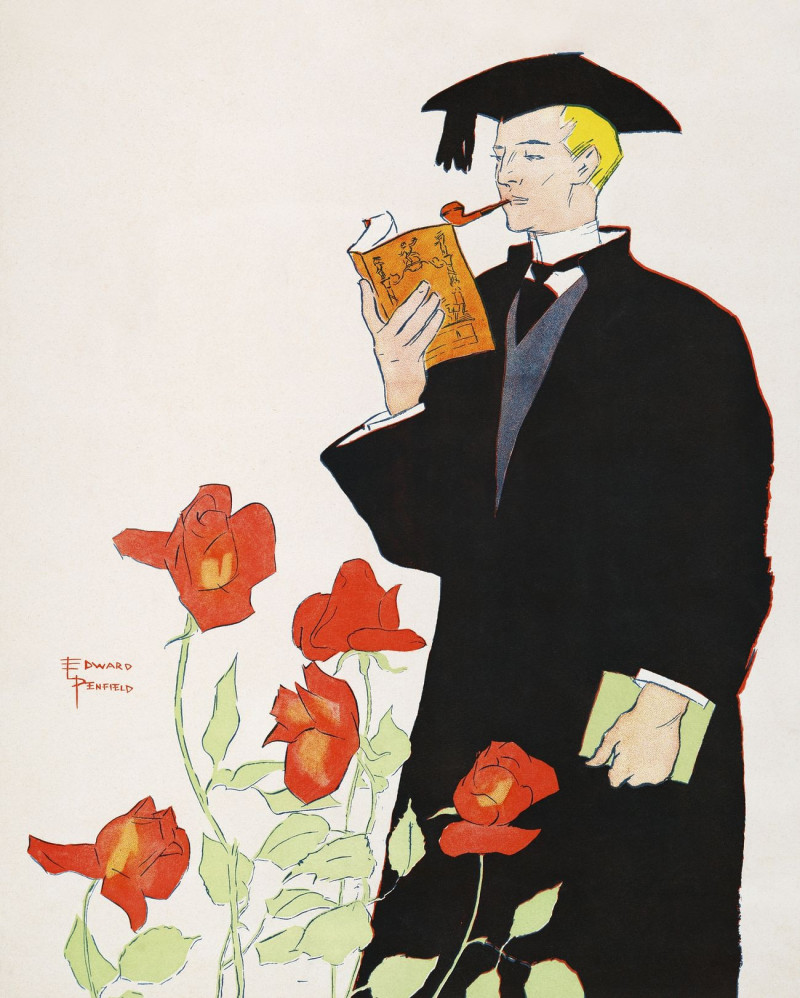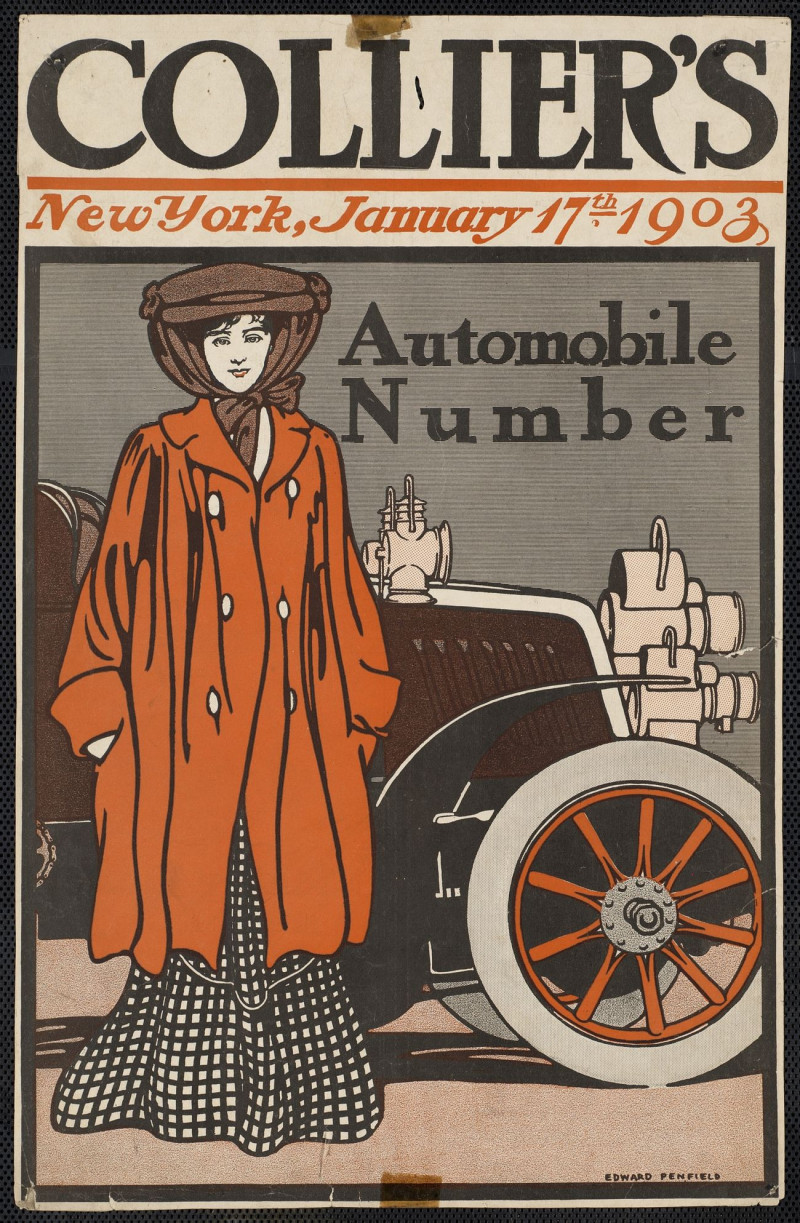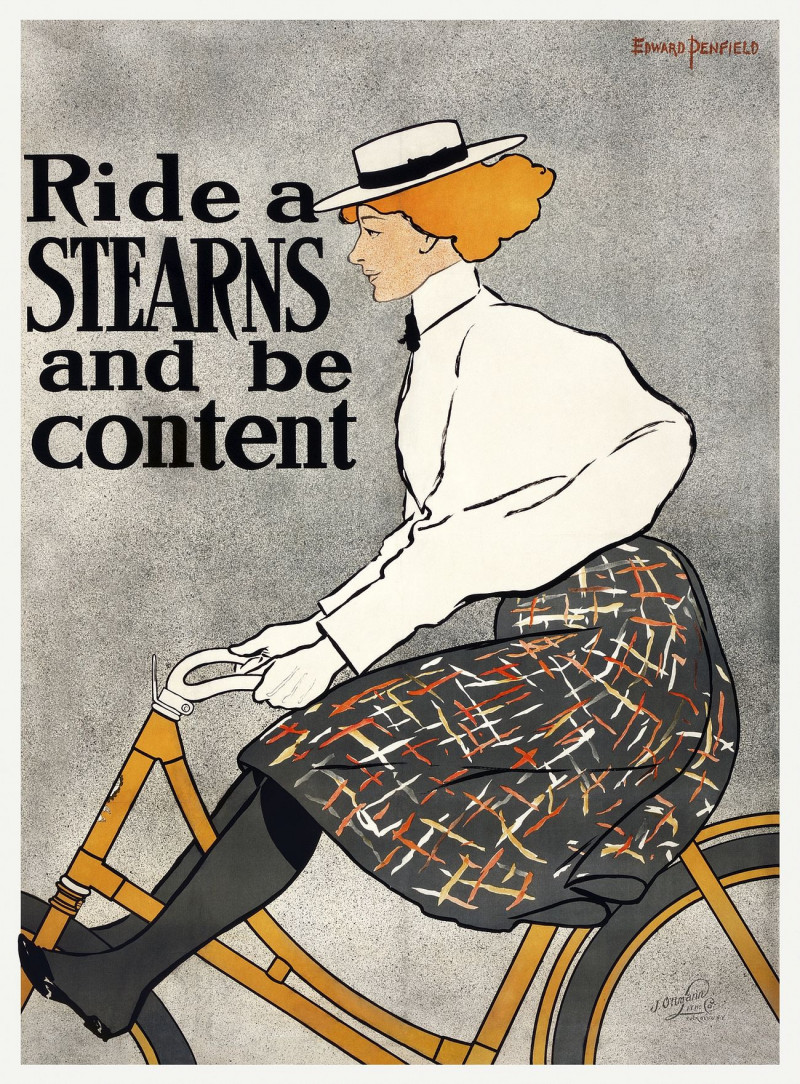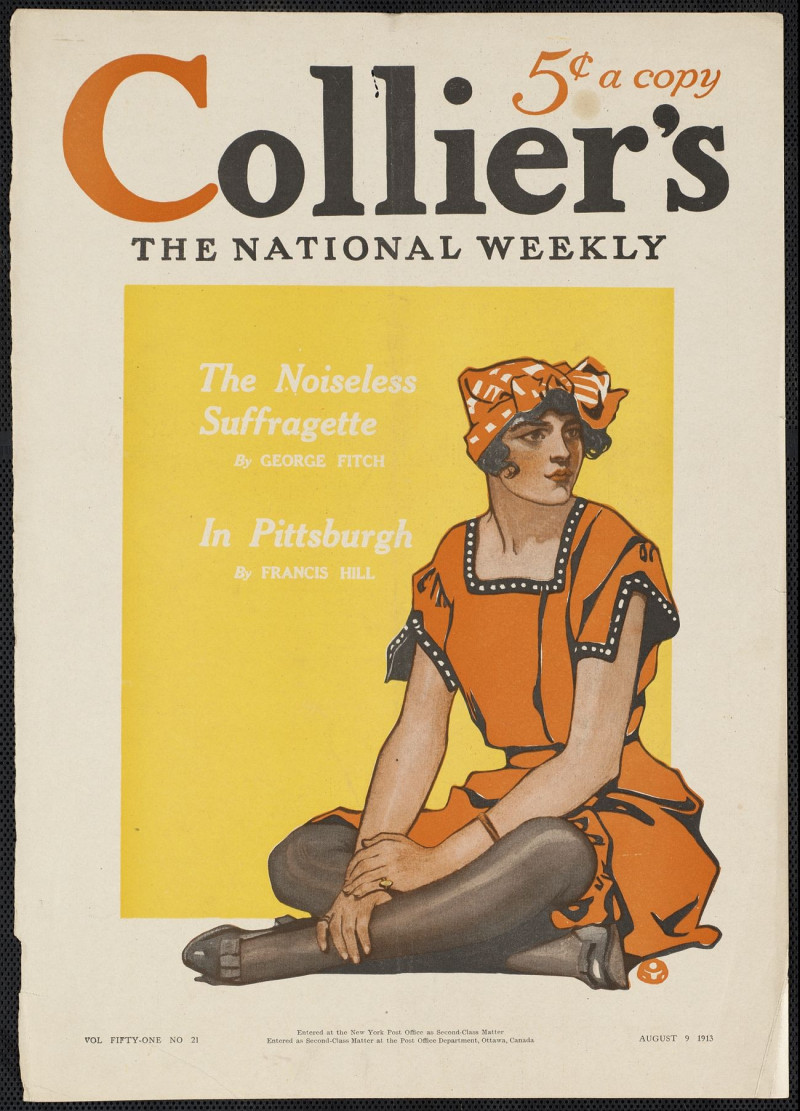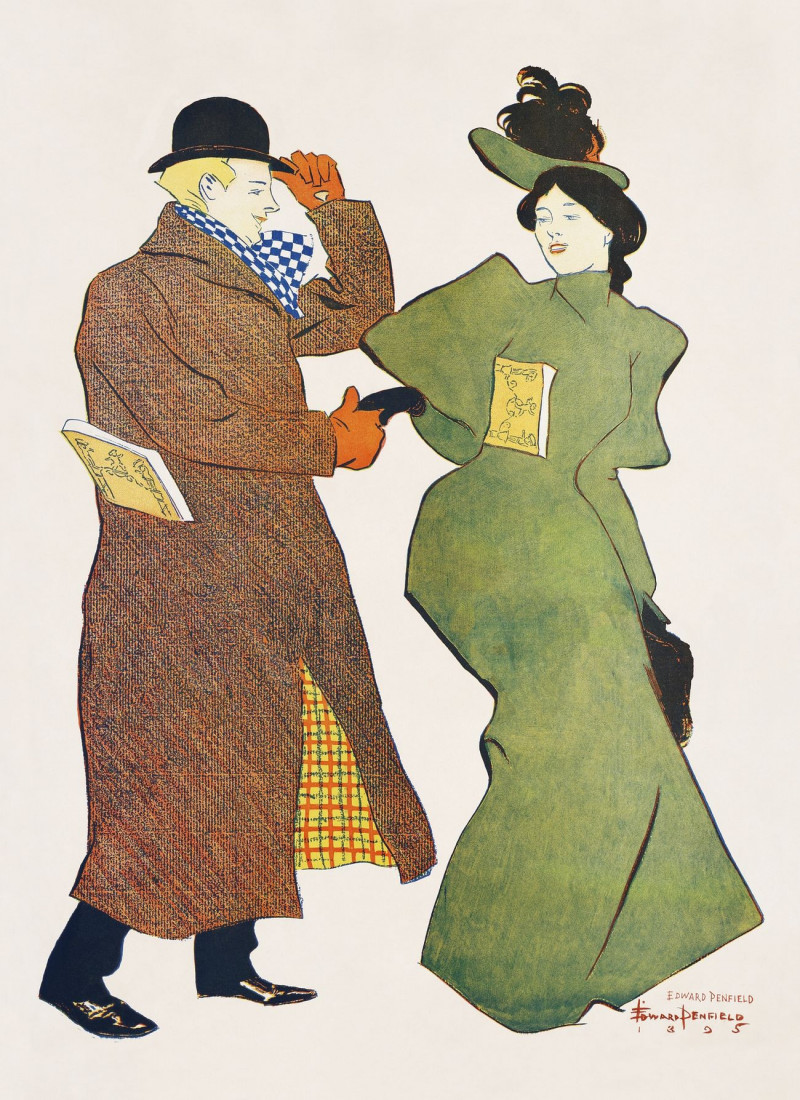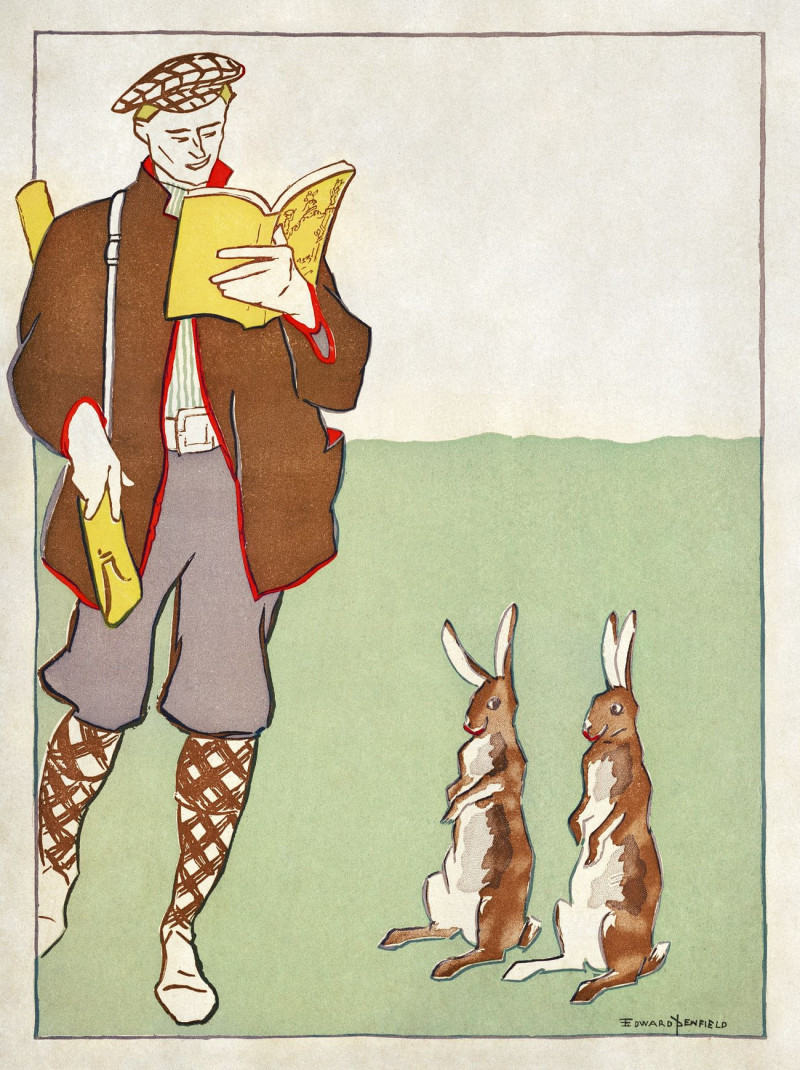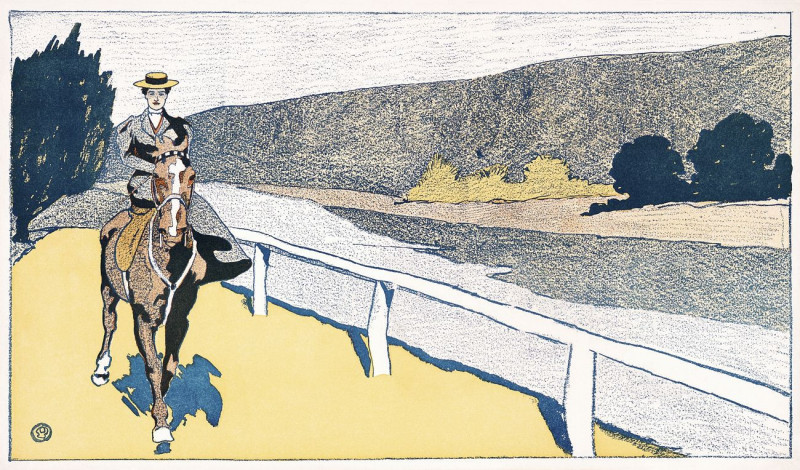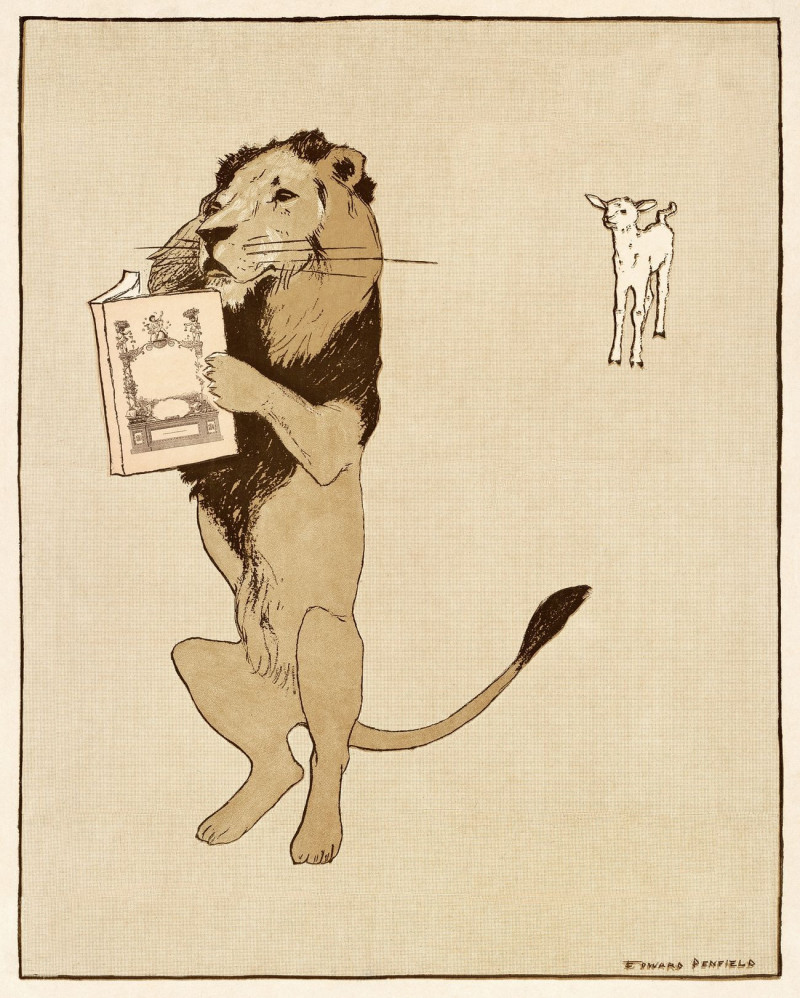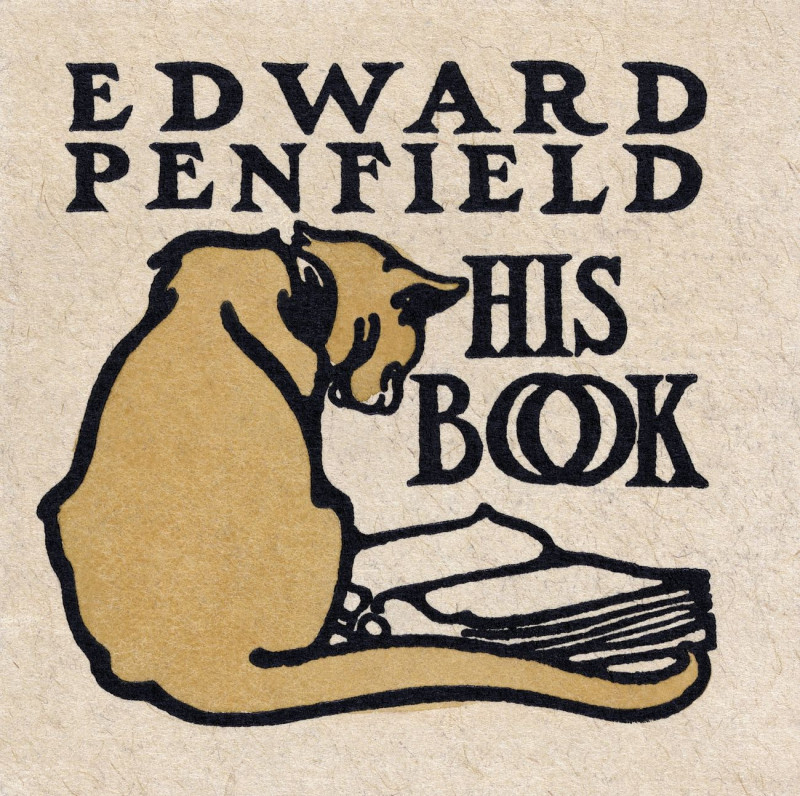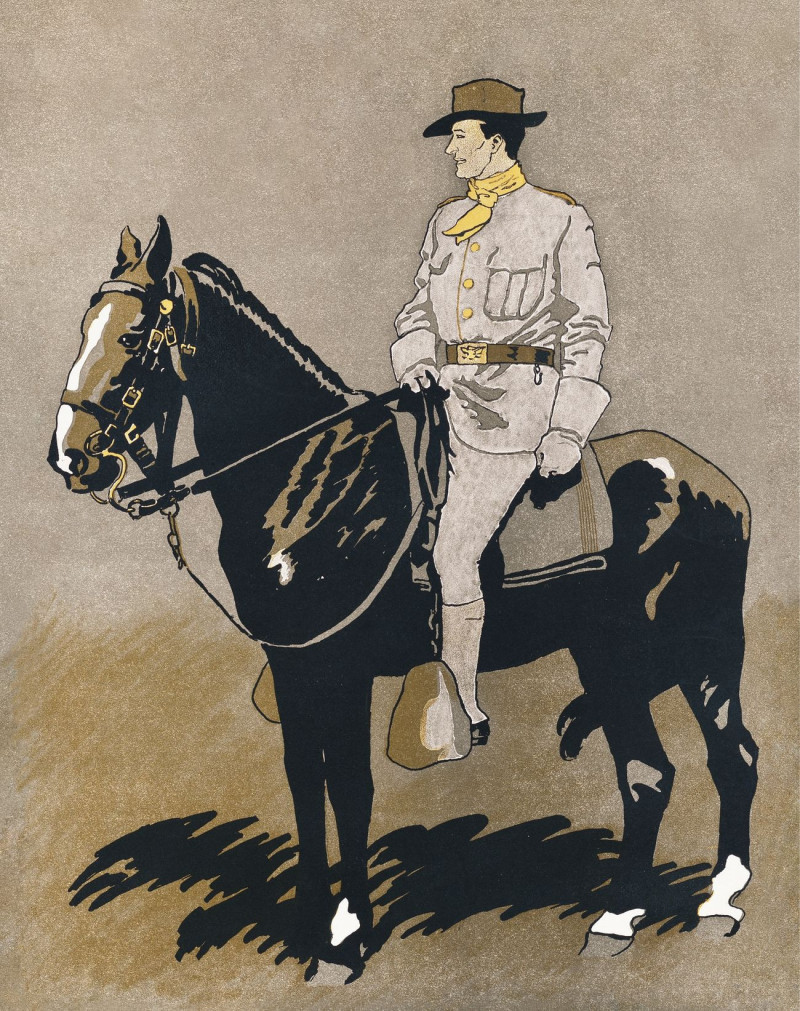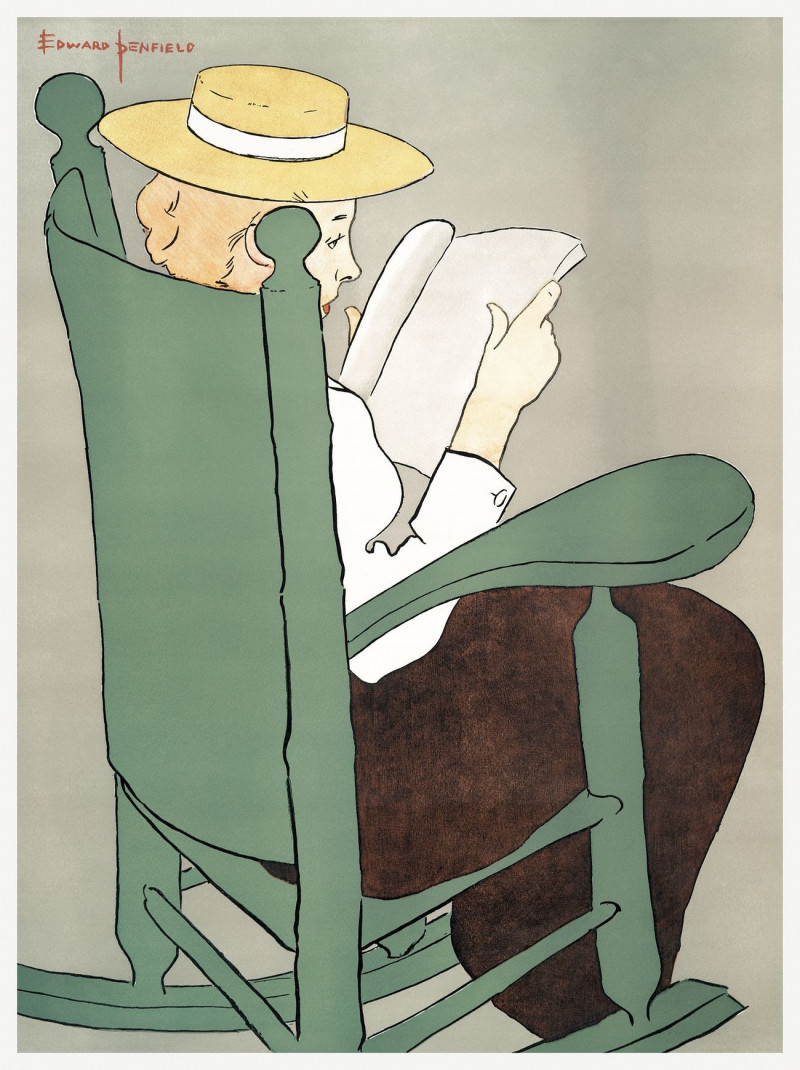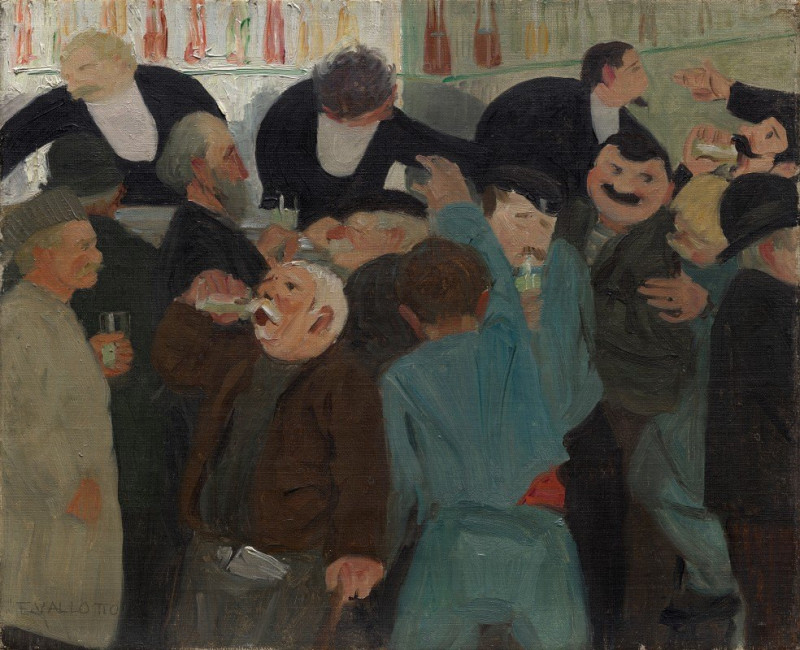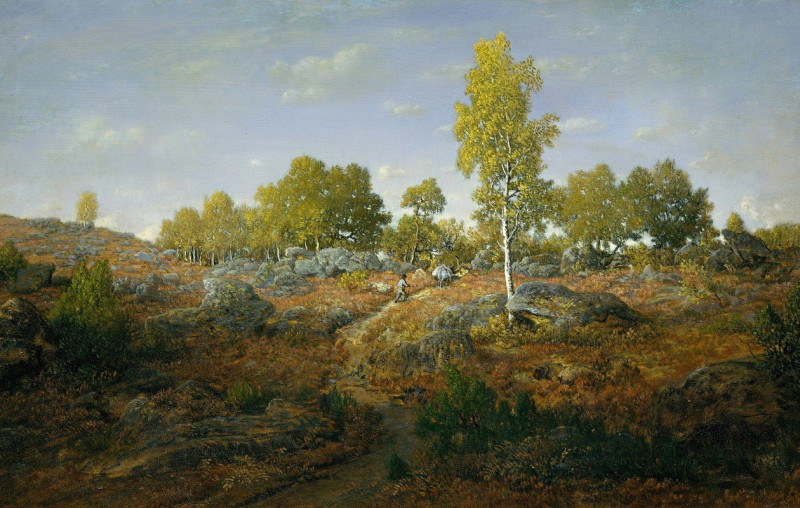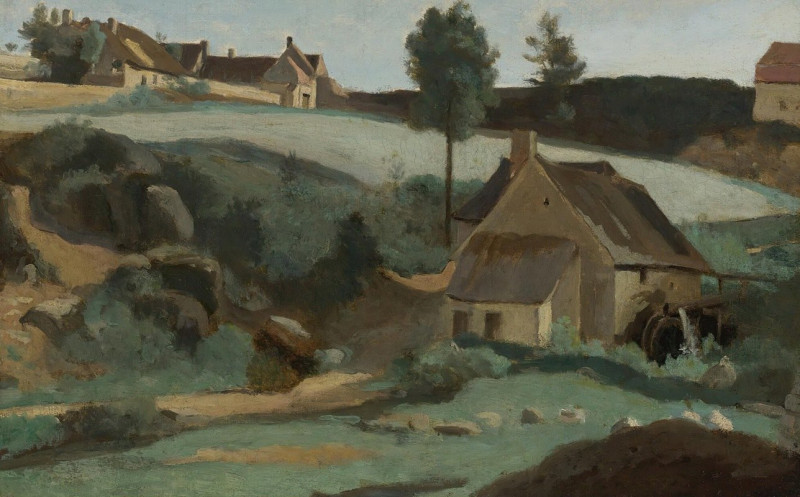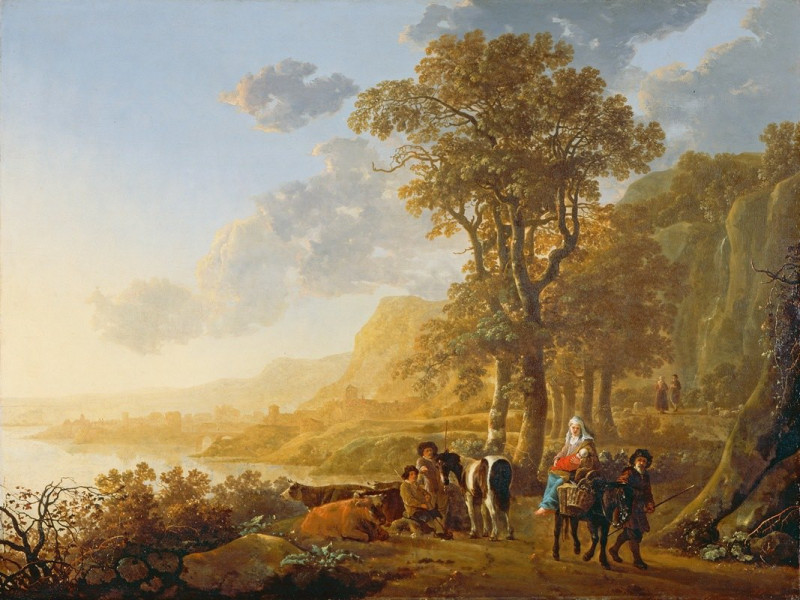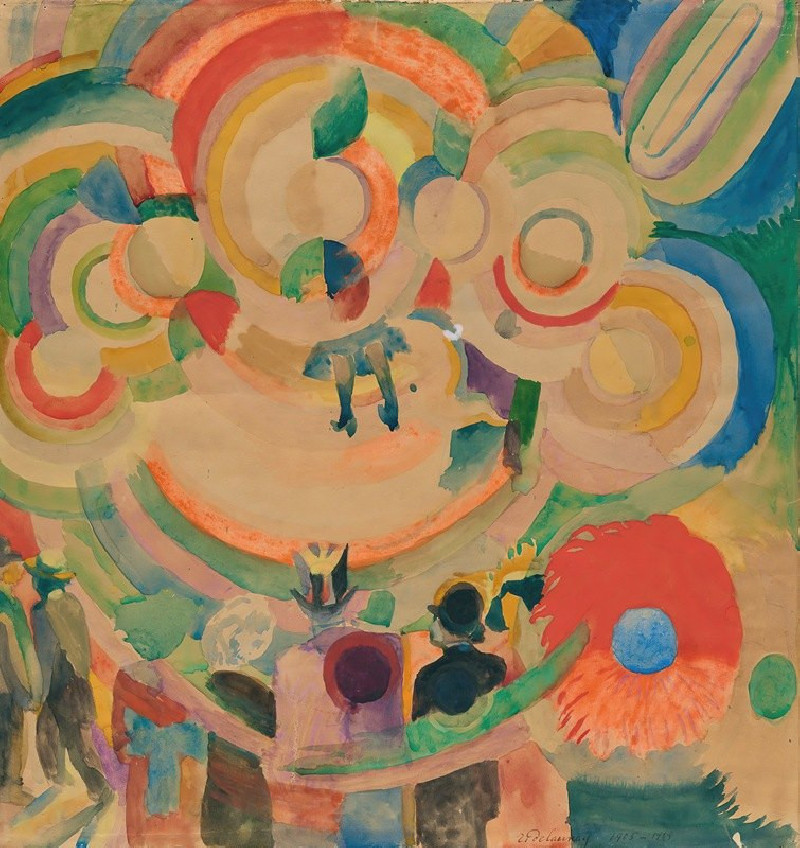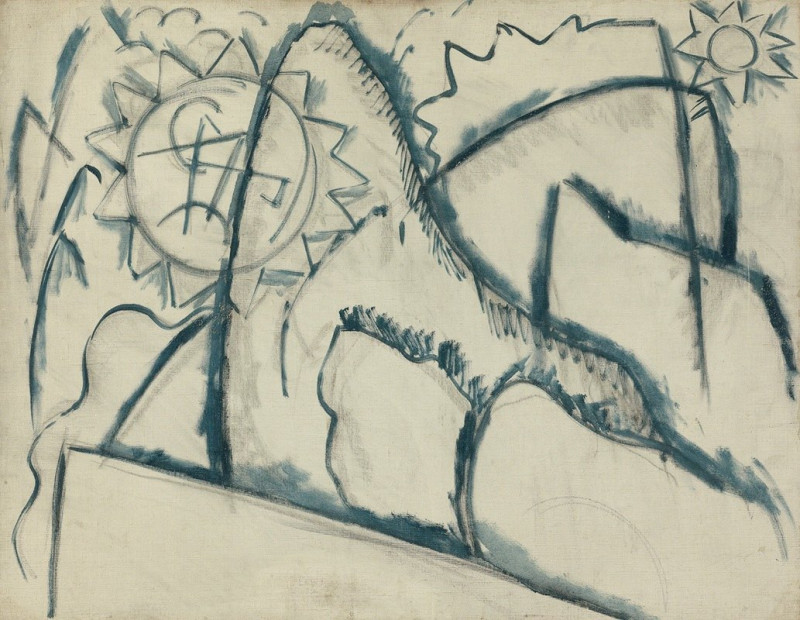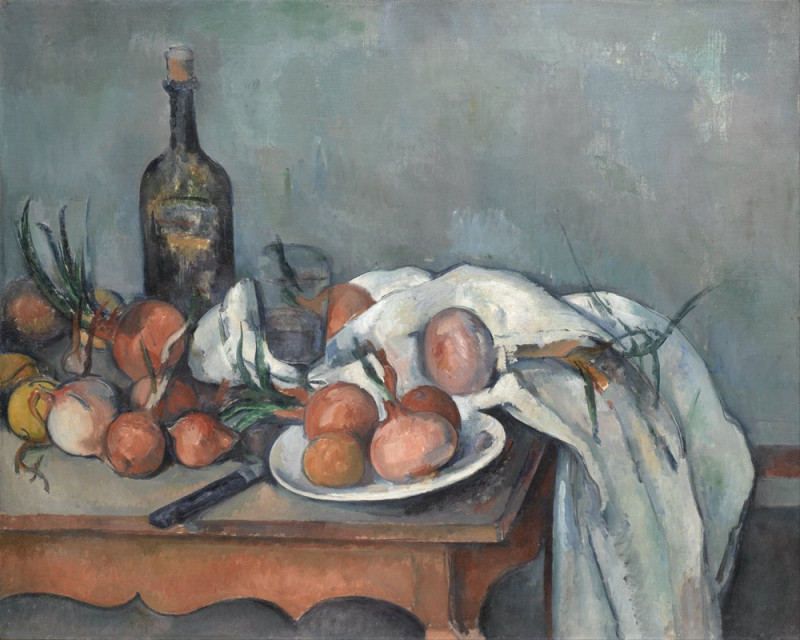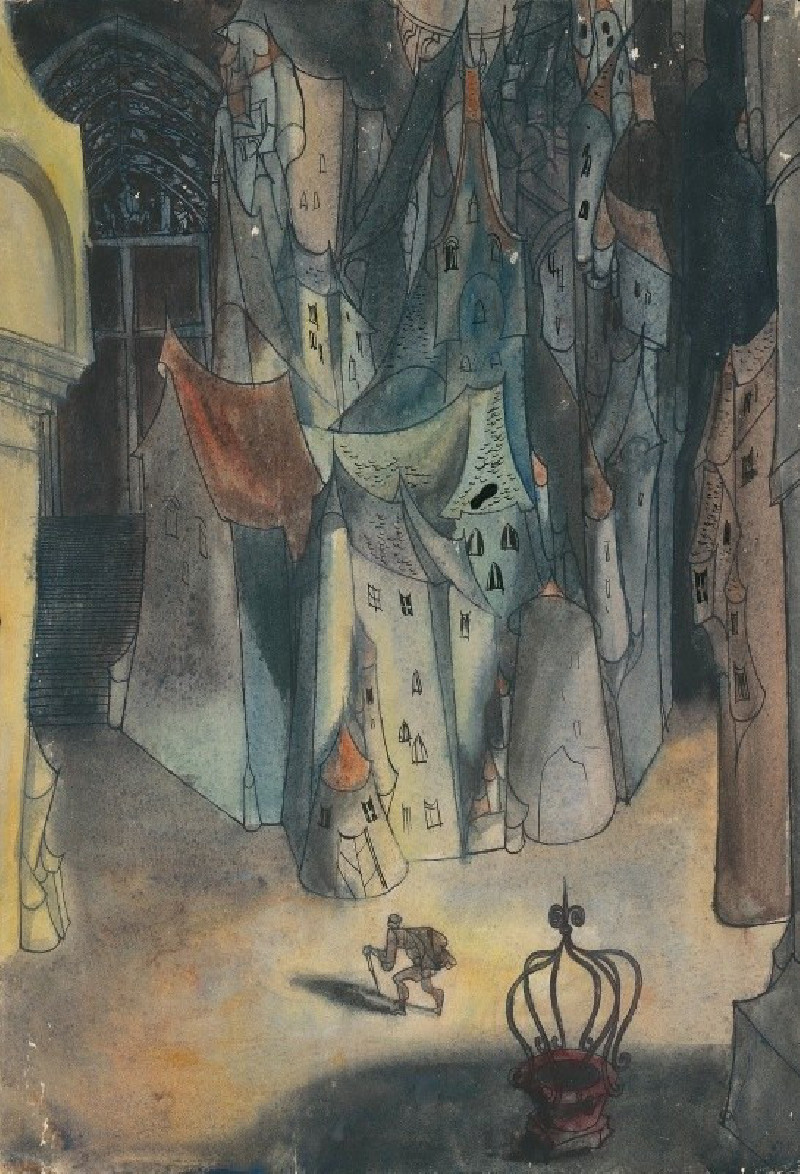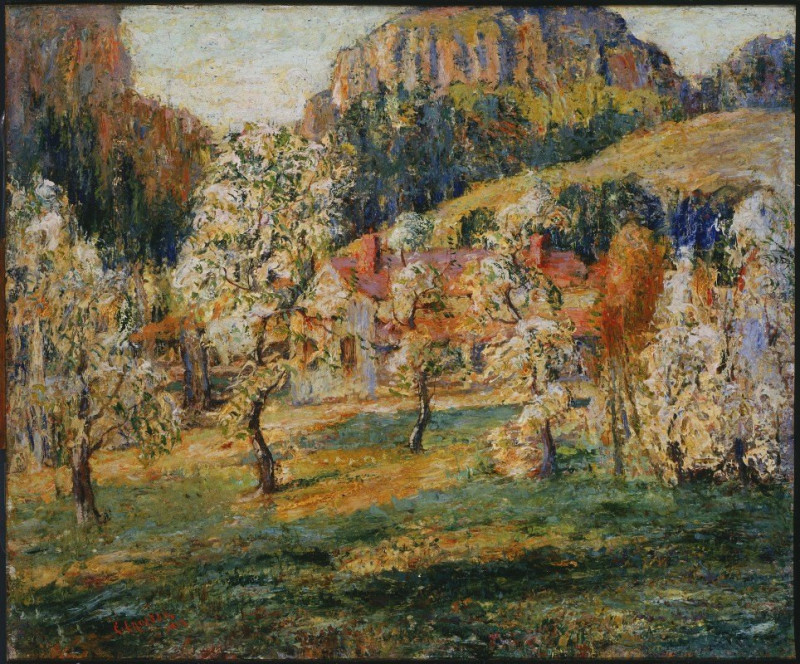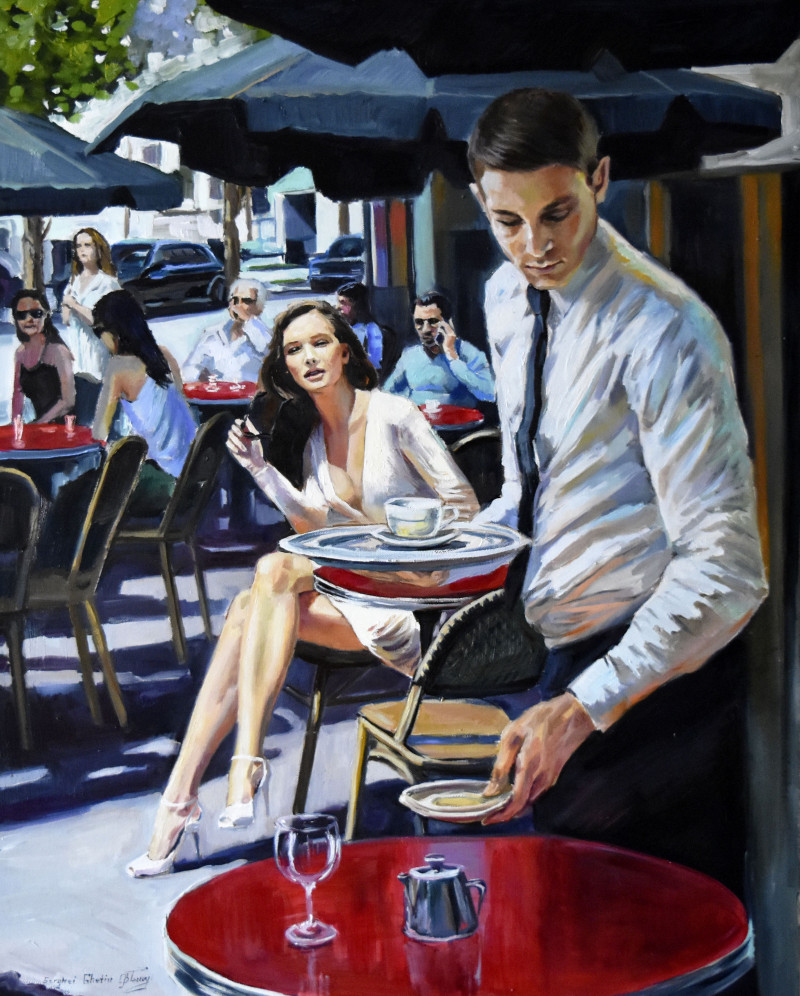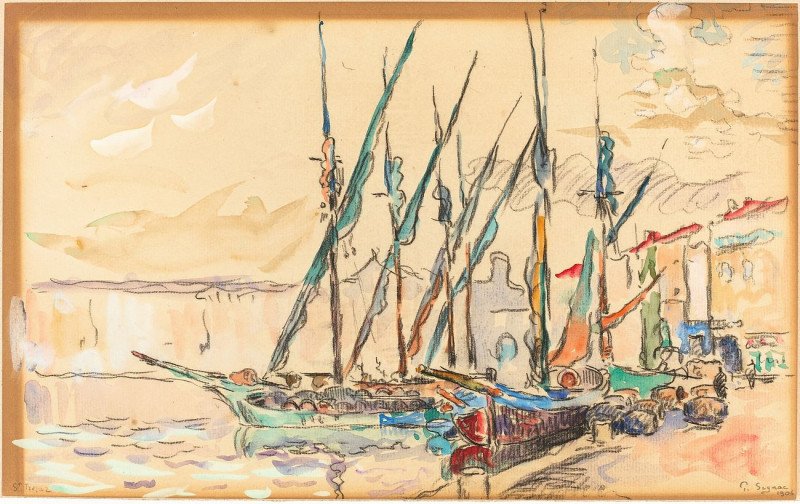Harper'S May
Technique: Giclée quality print
Recommended by our customers
More about this artwork
This painting by Edward Penfield, titled "Harper's May," is a striking example of early 20th-century graphic design intended for a magazine cover. It features a large, bold composition typical of Penfield’s style, often recognized for its clean lines and strong color blocks that effectively catch the viewer’s attention.The image depicts a woman in a simple yet elegant white dress, holding two animals: a cat on her left and what appears to be a ferret on her right. The animals are portrayed with expressive detail, suggesting a sense of liveliness and personality. The woman's calm and somewhat reserved expression contrasts with the playful demeanor of the animals, creating a dynamic and engaging visual narrative.The text "Harper's May" in large, uppercase letters dominates the top portion of the composition, clearly indicating the magazine edition the cover was designed for—Harper's Magazine’s May issue. The font and placement of the text are integral to the design, marrying typography with imagery to produce a unified and visually appealing piece.The overall color palette is subdued yet effective, using shades of grey, white, and black with touches of orange to highlight specific elements like the woman’s collar and the magazine’s title. This limited color scheme helps focus attention on the subjects and enhances the overall impact of the design.Edward Penfield’s work often carried such characteristics, blending artistry with commercial appeal, which made his posters and covers highly influential in the evolution of graphic design.
Delivery
Returns
Edward Penfield (1866-1925) was an influential American poster artist, considered as the father of the American poster movement. He was employed as an art editor for Harper’s Weekly, Monthly, and Harper’s Bazaar, where he made posters advertising each issue of the magazine for over seven years. His art was avant-garde with less concern for the dramatic curving lines of Art Nouveau, inspired by Japanese ukiyo-e block prints, figure drawings by Henri de Toulouse-Lautrec, color lithographies by Jules Chéret, and other contemporary artists. He created simplified scenes of daily life in saturated colors, including horses, cats, sports, and women’s fashion.

